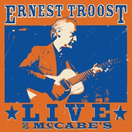LOS ANGELES — While the defense was on the verge of its counter attack in the trial of Michael Jackson’s doctor, the prosecution dramatically shifted the focus from personalities to science – its most powerful weapon in the courtroom battle.. Its star witness, a scientist with a reassuring witness box manner, had jurors on their feet straining for a better view of his show-and-tell demonstration. It was the closest they would come to seeing a purported re-enactment of how the King of Pop died. Dr. Conrad Murray, charged with causing Jackson’s death, watched intently as Dr. Steven Shafer closed the case against him holding a bottle of propofol, an IV bag and a tube carrying the milky white liquid downward. That was how it happened on June 25, 2009, said Shafer. He was certain. On Monday, a defense attorney will try to shake his testimony and later a fellow scientist billed as “the father of propofol,” will offer another theory. Whether Dr. Paul White can absolve Murray of blame for the singer’s death remains to be seen. But the defense is just beginning. “He will have to stand firm on the fact that reasonable minds can differ,” said Marcellus McRae, a former federal prosecutor and trial attorney who has been following the case closely. “He will have to change the landscape here and show some reasonable doubt. The question is will this be enough.” Murray, a Houston based cardiologist, has pleaded not guilty to involuntary manslaughter. McRae said calling Shafer as the final prosecution witness was a master stroke. “Brick by evidentiary brick, Shafer has built a wall of scientific reasons for the jury to conclude that Dr. Murray was criminally negligent,” he said. “It allows the prosecution to tell the jury that their case is built on science rather than shifting theories.” In addition to making the science understandable, Shafer offered some colloquial phrases that may resonate with jurors including the words “crazy” and “clueless.” He called Murray’s unorthodox use of propofol as entering “a pharmacological never-never land “and said the doctor was “clueless” when it came to helping his dying patient. And he denounced a defense theory that Jackson could have awoken from sedation and given himself the drugs that killed him during a few minutes that he was left alone by Murray. “People don’t just wake up from anesthesia hell-bent to pick up a syringe and pump it into the IV,” Shafer said, reminding the jury that the procedure was complicated. “It’s a crazy scenario.” Shafer stood in the well of the courtroom with an IV pole, a bag of saline solution and a bottle of propofol, showing how the drug could have run quickly into Jackson’s veins while his doctor was out of the bedroom. He drew a scene in which Murray, lacking the proper equipment to measure doses, left Jackson on an IV drip of the powerful anesthetic flowing quickly under the pull of gravity into the sleeping singer. It was the explanation, he said, of how Jackson died of a propofol overdose with no one present to see that he had stopped breathing. “This fits all of the data in this case and I am not aware of a single piece of data that is inconsistent with this explanation,” Shafer said. In early cross-examination, defense attorney Ed Chernoff asked Shafer if that wasn’t “a bold statement.” “It’s an honest statement,” he replied. Shafer’s mathematical calculations projected on a large screen concluded that Murray had not given his patient the minimal 25 milligrams he claimed, but had started a vastly larger infusion of a 100 milliliter bottle, containing 1,000 milligrams of the drug. No, Shafer said, Jackson had not given himself an additional infusion of propofol. “He can’t give himself an injection if he’s asleep,” he said. Shafer was the prosecution’s closer. An anesthesiology professor and researcher at Columbia University Medical School, he wrote the package insert instructing doctors how to use propofol. He listed 17 “egregious” violations of the standard of care by Murray, chief among them leaving his anesthetized patient alone and failing to call 9-1-1 when he found Jackson not breathing. . Deputy District Attorney David Walgren concluded a key day of Shafer’s examination by asking: “Would it be your opinion that Conrad Murray is directly responsible for the death of Michael Jackson for his egregious violations and abandonment of Michael Jackson?” Shafer replied, “Absolutely.” Just giving Jackson the anesthetic as a sleep aid in a home setting was unconscionable, Shafer testified. It is intended for surgery in hospitals where resuscitation equipment is available. “We are in pharmacological never-never land here, something that was done to Michael Jackson and no one else in history to my knowledge,” he told jurors. Gray haired and amiable, Shafer entranced jurors with his easy manner, speaking directly to them as he made molecules understandable and led them through complicated graphs projected on a courtroom screen. When Chernoff accused him of trying to send a message to jurors, he responded calmly, “I’m trying to make it easy for the jury. These are complex graphs and I’m trying to explain to the jury a very complex pharmacology. There is no other agenda as you’re suggesting.” McRae gave Walgren and co-prosecutor Deborah Brazil high marks. “Good trial lawyers know that you have to persuade on the law, persuade on a factual level and then persuade on a moral and common sense level,” he said. “Even though you’re not going to hear an instruction about morality, the jury has to feel they’re making the right decision on a gut level.” “I think the prosecutors here have done a very effective job of hitting the human element, the moral element and now the factual element.” he said. A parade of 32 witnesses had testified before Shafer took the stand and stole the show. They included Jackson’s household personnel, security guards, paramedics and a business associate. Jurors heard about the legendary singer’s final day on earth — singing and dancing at a rehearsal for his comeback concert, reveling in the adulation of fans who showered him with gifts. And then a night of horror, chasing the most elusive treasure he craved — sleep. Most dramatic were two recordings — one of the heavily drugged singer dreaming aloud to his doctor about future triumphs and then the doctor himself being interviewed by police two days after the death that shook the world of pop culture. All of it told a compelling story structured by prosecutors Walgren and Brazil to prove that Murray, who had been hired by Jackson for $150,000 a month as his personal physician, was responsible for his famous patient’s death. With the trial winding down, they brought on the experts, a coroner and two doctors who evaluated Murray’s conduct for the California Medical Board. Dr. Nathan Kamangar, described Murray’s conduct as “unethical, disturbing and beyond comprehension.” Dr. Alon Steinberg enumerated deviations from the standard of care, and said, “If all of these deviations didn’t happen, Michael Jackson might have been alive.” See the original post: SCIENCE: ‘The Most Powerful Weapon In The Courtroom Battle’







